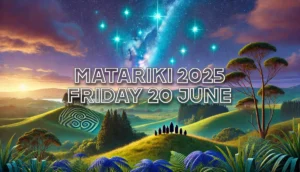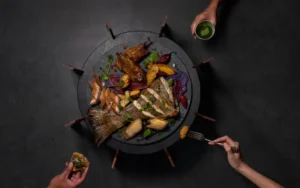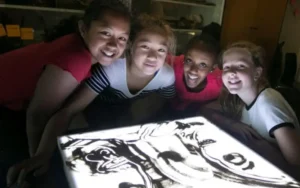The Role of Storytelling in Matariki Celebrations
Storytelling has been an integral part of Matariki celebrations in Māori culture. The stories told during Matariki celebrations serve as a way to honor the past, connect with the present, and envision the future. In this article, we will explore the role of storytelling in Matariki celebrations and its significance in Māori culture.
Historical Background
Matariki has been celebrated by Māori communities for centuries. The appearance of the Matariki cluster in the sky signaled the start of the Māori New Year, which was a time to acknowledge the past and plan for the future. Storytelling played a crucial role in Matariki celebrations, as it allowed for the transmission of knowledge and cultural traditions from one generation to the next. The stories told during Matariki celebrations were often about the stars and their significance in Māori culture.
Role of Storytelling in Matariki Celebrations
Storytelling continues to play an important role in modern-day Matariki celebrations. During Matariki festivals and events, people gather to hear stories about the stars and their significance. These stories can range from traditional tales to personal stories about the impact of Matariki on people’s lives. Through storytelling, Māori communities can pass on cultural knowledge and traditions to future generations.
One of the key themes in Matariki storytelling is the concept of renewal. Matariki marks the end of one year and the beginning of a new one. The stories told during Matariki celebrations often focus on the themes of rebirth, renewal, and new beginnings. These stories serve as a reminder of the importance of reflection and planning for the future.
Another important theme in Matariki storytelling is the concept of whakapapa, or genealogy. The stories told during Matariki celebrations often trace the genealogy of Māori communities and their connection to the stars. These stories highlight the importance of ancestry and the role of the stars in Māori culture.
Significance of Storytelling in Māori Culture
Storytelling has been an important part of Māori culture for centuries. In Māori tradition, storytelling serves as a way to connect with one’s ancestors and the natural world. The stories told by Māori storytellers often include elements of mythology, history, and personal experience.
In Māori culture, the concept of whakapapa is central to storytelling. Whakapapa refers to genealogy and the connections between people, places, and things. Through storytelling, Māori communities can trace their whakapapa and pass on their cultural knowledge and traditions to future generations.
Storytelling also plays an important role in maintaining the Māori language. Many Māori stories are told in te reo Māori, the Māori language. By telling stories in te reo Māori, Māori communities can help preserve and promote their language and culture.
Challenges and Opportunities
While storytelling continues to play an important role in Matariki celebrations and Māori culture, there are also challenges and opportunities facing Māori storytellers today. One challenge is the loss of traditional storytelling practices due to colonization and cultural assimilation. Many Māori storytellers have had to adapt their storytelling practices to fit the changing cultural landscape.
However, there are also opportunities for Māori storytellers to use new technologies and platforms to reach wider audiences. The rise of digital storytelling and social media has provided new avenues for Māori storytellers to share their stories and connect with people from all over the world.
Different Forms of Storytelling
Different forms of storytelling are used to pass down knowledge and traditions during Matariki celebrations. These include traditional oral storytelling, waiata (songs), haka (dances), and visual arts such as carving, weaving, and painting. The use of these different forms of storytelling helps to reinforce cultural identity, promote intergenerational understanding, and provide a deeper connection to Māori culture.
Traditional oral storytelling :
Traditional oral storytelling, or whakapapa, is an important aspect of Māori culture and is used to trace family and cultural histories. During Matariki, elders and knowledgeable community members share stories about their ancestors, their connections to the stars, and the significance of Matariki in their culture. These stories help to preserve and pass down cultural knowledge and provide a deeper understanding of the role of Matariki in Māori culture.
Waiata and haka :
Waiata and haka are also important forms of storytelling during Matariki celebrations. These traditional songs and dances often have specific meanings and are used to tell stories, express emotions, and communicate cultural values. They can be performed by individuals, groups, or whole communities and are often accompanied by traditional musical instruments such as the poi, guitar, or taonga pūoro (traditional Māori instruments). These forms of storytelling are used to celebrate the significance of Matariki and to promote a sense of community and connection.
Visual arts :
Visual arts such as carving, weaving, and painting are also used to tell stories during Matariki celebrations. These art forms often incorporate traditional designs and patterns that have specific meanings and are used to communicate cultural values and history. For example, carving may depict ancestors or important cultural figures, while weaving may incorporate patterns that represent different aspects of the natural world. These visual art forms are often displayed during Matariki celebrations and serve as a visual reminder of the cultural significance of the event.
Matariki Celebrations
In recent years, there has been a renewed interest in Matariki celebrations and a growing recognition of the importance of storytelling in maintaining and promoting Māori culture. This has led to an increased focus on incorporating storytelling into Matariki celebrations and on providing opportunities for people to learn about and participate in traditional forms of storytelling. For example, some communities have established storytelling workshops, where elders and knowledgeable community members can share their stories and teach others about their culture. Additionally, there has been an increased focus on incorporating storytelling into educational settings, such as schools and museums, in order to promote a deeper understanding of Māori culture and its significance.
In conclusion, storytelling plays a crucial role in Matariki celebrations and is an important aspect of Māori culture. Through traditional oral storytelling, waiata, haka, and visual arts, cultural knowledge and traditions are preserved and passed down from one generation to the next. The incorporation of storytelling into Matariki celebrations promotes a deeper understanding of Māori culture and serves to strengthen cultural identity and connection to the past.


